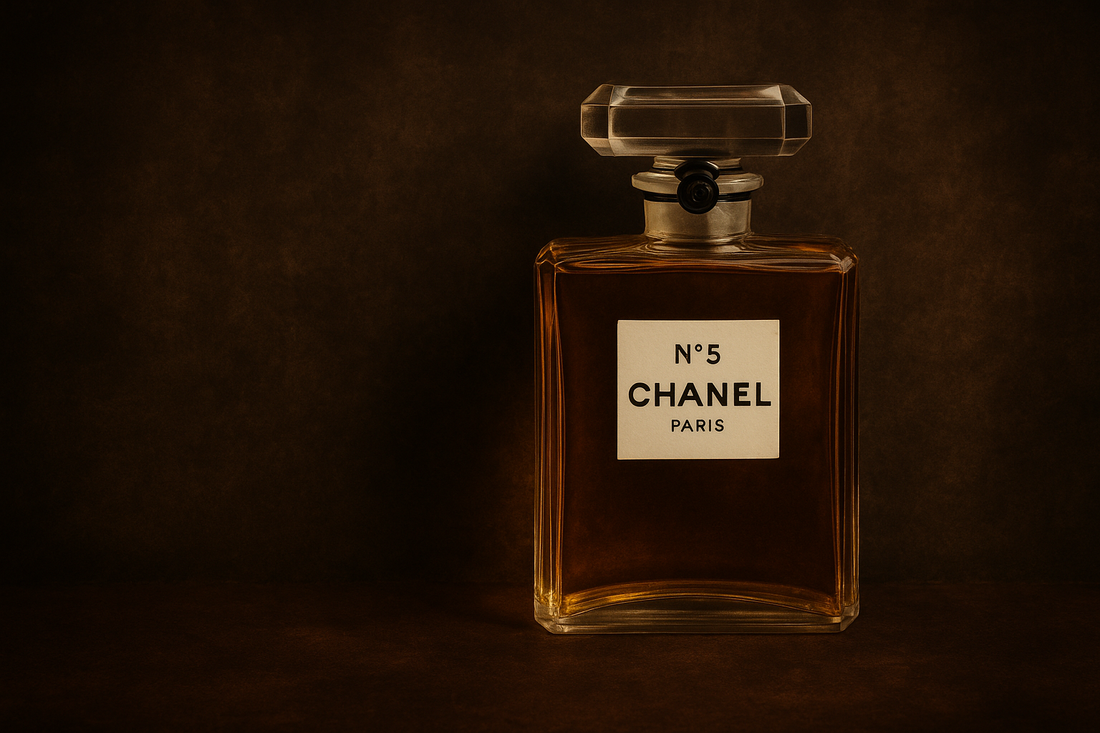
Share
The Dark Allure of Chanel No. 5: Power, Perfume, and the Woman Behind the Bottle

Delving into The Secret of Chanel No. 5 by Tilar J. Mazzeo — A Fascinating Exploration of the Creation, Controversy, and Legacy of the World’s Most Iconic Fragrance
Some perfumes you wear. Others wear you. And then there’s Chanel No. 5—a fragrance so unique it doesn’t sit on the skin so much as seep into the fabric of the century itself. In The Secret of Chanel No. 5: The Biography of a Scent, Tilar J. Mazzeo lifts the gilded veil on the most unique bottle in the world. What emerges isn’t just a story of jasmine and aldehydes, but one of ambition, betrayal, wartime darkness, and a battle over beauty’s soul.
Let’s begin with the biographer herself. Tilar J. Mazzeo is no stranger to luxury and legend. Her literary pedigree includes The Widow Clicquot—a similarly intoxicating tale of branding and female genius. With the analytical eye of a historian and the flair of a novelist, Mazzeo excels at unravelling the seams of myth to reveal the stitching underneath. This is not just a book about a bottle of scent. It’s a story about the making of a modern myth—and the shadows that cling to it like base notes on skin.
Mazzeo begins in the roaring 1920s, where Coco Chanel, freshly freed from corsets and sentimentality, set her sights on creating something new: a perfume that didn’t smell like a flowerbed or a courtesan. Enter Ernest Beaux, a perfumer with a background in Russian chemistry and French savoir-faire, who concocted a radical blend of aldehydes and florals. Chanel picked the fifth sample. She liked the number. The rest is legend.
Packaged in a simple square art deco bottle—an elegant act of defiance in a world that loved ribbons and rococo flourishes—Chanel No. 5 was less a perfume and more a manifesto. It smelled expensive. It smelled abstract. It smelled, frankly, like sex that had cleaned up well. And women adored it. Marilyn Monroe wore it to bed. Andy Warhol painted it. Chanel had created a scent that was both intimate and imperial—a perfume that belonged to no one and everyone.
But behind the glass flacon, trouble brewed. Chanel was a brilliant couturière and a ruthless businesswoman. To finance the production of No. 5, she struck a deal with Pierre and Paul Wertheimer, savvy Jewish entrepreneurs who owned the Bourjois cosmetics empire. The Wertheimers would manufacture and distribute the perfume; Chanel would provide the name. But when No. 5 became a runaway success, she realised she had signed away most of the profits—and worse, control.
Mazzeo dives deep into this feud, and what a deliciously bitter battle it was. Chanel, furious at the disproportionate split, spent years trying to wrest the perfume back from the Wertheimers. Lawsuits were filed. Alliances shifted. She even tried, in what must be one of the most ethically fraught chess moves in luxury history, to use Nazi Aryanization laws during the German occupation of France to oust her Jewish partners and reclaim full ownership.
Yes—Mazzeo does not flinch from this darkest chapter. While Paris suffered and France fractured, Chanel cosied up to a Nazi officer named Hans Gunther von Dincklage and repositioned herself for power. The book stops short of outright condemnation but leaves little doubt: Chanel was no resistance hero. Her ambition, like her perfume, was bold, cold, and unapologetically potent.
Still, the irony is exquisite. The Wertheimers, foreseeing danger, had long since moved the legal ownership of No. 5 to New York. While Chanel plotted, they protected. After the war, she was left not only defeated but dependent. Eventually, in a masterstroke of damage control and diplomacy, the Wertheimers struck a new agreement: they would finance her return to fashion in the 1950s, and in return, she would stop her attacks on their business. She got her legacy. They got the perfume.
Mazzeo tells this tale with verve and a sly awareness that beauty rarely comes without cost. Her prose moves between opulent detail and investigative precision. She captures the sensorial language of scent—how Chanel No. 5 smells not just like flowers but like power, like money, like desire turned into liquid—while also giving us a peek behind the velvet curtain of the luxury industry.
There’s something seductive about watching a cultural artefact get unwrapped this way. The Secret of Chanel No. 5 is not a puff piece. It’s a study in contradictions: a radical perfume born in an age of repression; a pioneering woman who betrayed other women; a bottle that embodied modernity, built on a business deal that nearly undid it.
For those enchanted by the mystique of luxury, Mazzeo offers a wake-up call: behind every icon is an infrastructure. Behind every whiff of immortality, a ledger. Chanel No. 5 may be eternal, but its history is anything but pure.
Spritz lightly. Read deeply. And remember—what lingers in the air isn’t always the whole story.
